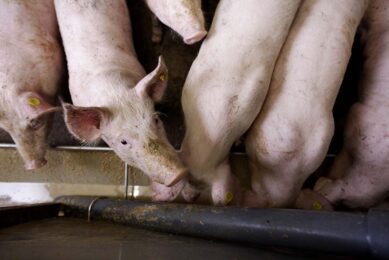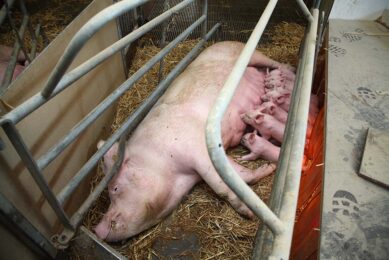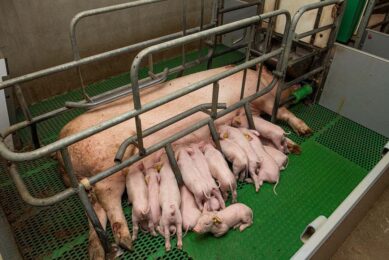Top producing sows need extra fibre

Changes in pig genetics and increased litter sizes requires a different kind of feed. In feed production, it is possible to see a focus shifting to the inclusion of fibres and fermentative digestion.
Sows on most pig farms usually only have a thin layer of back fat left these days. That particularly holds true for Danish sows, which even look a bit like body builders these days. A downside to that development is that these animals do not have a tremendous amount of energy reserves to fall back on in case of a shortage of energy. Especially in a time when litter sizes are growing, however, the sows are in need of stable energy levels.
Increasingly, feed producers are therefore searching for answers in an adjustment of feed composition. Recently, fibre content in sow rations has been receiving more attention, and the practice is well-established now.
Production of fibre-rich feed
Soy hulls or beet pulp are known sources of soluble fibre, digesting easily in the large intestine. During production of feeds that should get these fibre-rich components, the processing of raw materials is being adjusted in order to allow fibres to be digested where intended: in the sows’ large intestine. In the gut, bacteria are key, as they cause the fibres to digest via fermentation, a process that takes time, slowing down digestion speed. It gradually releases volatile fatty acids, forming a source of energy for sows. This ensures that a sow has enough energy to produce during the day and when more pressure is put on her during farrowing and with a large litter to feed.
Speeding up the farrowing process
Feed rich in fibre is known to have more advantages, of which farrowing speed is an important one. That is related to manure composition. If that remains smooth due to the feed’s fibrous content, the risk of constipation is much lower. With feed supply maintained at good levels, sows will have more energy during the farrowing process and the piglets are born 30 minutes faster than when feed rations before farrowing are lower.

Secondly, fibre-rich feed leads to less congestion at the udder, because milk let down starts earlier. The sows will feel happy and feed supply can remain at a good level, ideally it shouldn’t drop below 2.8 kg/day before farrowing.
Fibres also benefit the sow’s digestive tract. Enough fermentable fibre and even a small percentage of indigestible or inert fibre ensures proper functioning of the gut and a good composition of the stomach contents, which should form an even, paste-like substance. The pH balance in the middle of the stomach is 3 or lower. This is extremely acidic, because of the formation of hydrochloric acid. When the stomach contents becomes fluid, hydrochloric acid rises up and damages the mucous membrane, especially where the oesophagus meets the stomach entrance. That can lead to gastric ulcers in the most serious cases.
Furthermore, fibres also stimulate the health of the large intestine. Sufficient amounts of fibre being fermented there will contribute to a healthy bacterial culture, comparable to the use of probiotics. Those inhibit the formation of pathogenic bacteria in the sow’s intestine which will benefit the piglets during and after farrowing. When piglets come into contact with healthy flora in the sow’s manure during farrowing, the risk of neonatal diarrhoea decreases and infections with pathogenic clostridium bacteria and rotaviruses are less prevalent.
Farm animal health
The use of fibres in feed will be more effective when the health of the animal is good and the feed schedule is tailor-made. The farrowing process can still be delayed if the sow is not in a top condition. Fibres can only support these processes and are not a miracle cure.
 Beheer
Beheer








 WP Admin
WP Admin  Bewerk bericht
Bewerk bericht